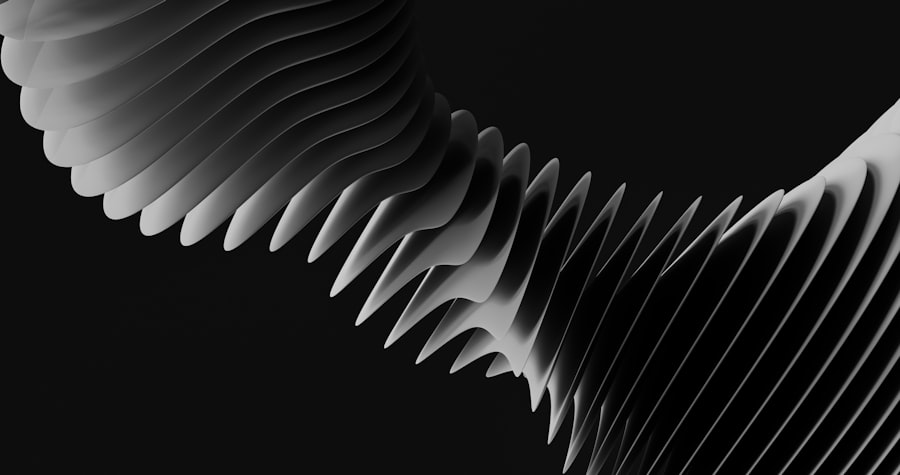In the digital age, where music consumption has evolved significantly, the visual representation of audio has taken on new dimensions. Animated audio-reactive cover art is a captivating blend of sound and visuals, where the artwork dynamically responds to the music it accompanies. This innovative concept not only enhances the listening experience but also engages viewers on a deeper level.
As you explore this realm, you’ll discover how sound waves can translate into mesmerizing visuals, creating a symbiotic relationship between audio and imagery. The essence of animated audio-reactive cover art lies in its ability to transform static images into living, breathing entities that pulse and shift in harmony with the music. Imagine a vibrant album cover that dances to the beat, with colors morphing and shapes evolving in real-time.
This form of art captures the essence of a song, allowing listeners to connect with the music on a sensory level that transcends mere auditory experience. By understanding this concept, you can appreciate how animated cover art serves as a powerful tool for artists and musicians to express their creativity and engage their audience.
Key Takeaways
- Animated audio-reactive cover art is a visual representation of music or sound that responds to the audio input, creating a dynamic and engaging visual experience for the audience.
- When choosing software and tools for creating animated audio-reactive cover art, consider the compatibility with audio-reactive plugins, ease of use, and the ability to export high-quality files for different platforms.
- Designing visual elements for animated audio-reactive cover art involves creating eye-catching graphics, experimenting with color schemes, and considering the overall aesthetic of the music or sound it represents.
- Incorporating audio-reactive elements into the cover art requires understanding audio visualization techniques, syncing visual elements with the music, and using audio-reactive plugins or scripts to achieve the desired effect.
- Testing and refining animated audio-reactive cover art involves checking for synchronization with the audio, optimizing performance, and gathering feedback from test audiences to make necessary adjustments.
- Showcasing and promoting animated audio-reactive cover art can be done through social media, music streaming platforms, and live performances, highlighting the unique and immersive visual experience it offers to the audience.
Choosing the right software and tools for creating animated audio-reactive cover art
When embarking on your journey to create animated audio-reactive cover art, selecting the right software and tools is crucial. The market offers a plethora of options, each with its unique features and capabilities. Programs like Adobe After Effects stand out for their robust animation tools and extensive plugin support, allowing you to create intricate animations that respond to audio input.
If you’re looking for something more user-friendly, software like Processing or TouchDesigner can provide a more accessible entry point into the world of audio-reactive visuals. In addition to software, consider the hardware you’ll need to bring your vision to life. A powerful computer with a good graphics card will ensure smooth rendering and playback of your animations.
Depending on your artistic style, you might also want to invest in drawing tablets or MIDI controllers that can enhance your creative process. By equipping yourself with the right tools, you’ll set a solid foundation for producing stunning animated audio-reactive cover art that captivates your audience.
Designing the visual elements for animated audio-reactive cover art

Once you’ve chosen your software and tools, it’s time to dive into the design phase. The visual elements of your animated audio-reactive cover art should reflect the mood and theme of the music it represents. Start by brainstorming ideas that resonate with the essence of the track.
Consider color palettes, shapes, and textures that evoke specific emotions or imagery associated with the music. This initial conceptualization will guide your design choices as you move forward. As you begin to create your visual elements, think about how they will interact with the audio.
For instance, if the music has a fast tempo, you might opt for sharp, dynamic shapes that move quickly across the screen. Conversely, slower melodies may lend themselves to softer, flowing visuals that create a sense of calm. Experimentation is key during this stage; don’t hesitate to try different styles and techniques until you find a combination that feels right.
Remember, your goal is to create a visual narrative that complements and enhances the auditory experience.
Incorporating audio-reactive elements into the cover art
With your visual elements designed, it’s time to integrate audio-reactive components into your cover art. This process involves mapping specific aspects of your visuals to various frequencies or amplitudes of the audio track. Most animation software allows you to link parameters such as scale, position, or color to audio input, enabling your visuals to respond dynamically as the music plays.
This is where the magic happens; as you adjust these settings, you’ll witness your artwork come alive in response to the sound. To achieve a seamless integration of audio-reactive elements, consider using keyframes and expressions within your software. Keyframes allow you to define specific points in time where changes occur, while expressions can automate these changes based on audio analysis.
For example, you might set an expression that causes an object’s scale to increase in response to bass frequencies, creating a pulsating effect that draws viewers in. By carefully calibrating these elements, you’ll create an immersive experience that captivates audiences and enhances their connection to the music.
Testing and refining the animated audio-reactive cover art
After incorporating audio-reactive elements into your design, it’s essential to test and refine your animated cover art. This stage involves reviewing how well your visuals respond to the audio and making adjustments as needed. Play through your animation multiple times, paying close attention to how different sections of the music influence the visuals.
Are there moments where the animation feels too slow or too chaotic? Use this feedback to fine-tune your work until it achieves a harmonious balance between sound and sight. Don’t hesitate to seek input from others during this process.
Sharing your work with fellow artists or friends can provide valuable perspectives that you might not have considered. They may notice aspects of your animation that could be improved or suggest new ideas for enhancing its impact. By embracing constructive criticism and being open to revisions, you’ll elevate your animated audio-reactive cover art to new heights, ensuring it resonates with viewers on multiple levels.
Showcasing and promoting the animated audio-reactive cover art

Once you’ve perfected your animated audio-reactive cover art, it’s time to showcase it to the world. Consider various platforms where you can share your creation, such as social media channels like Instagram or TikTok, which are ideal for visually-driven content. YouTube is another excellent option for sharing longer animations or behind-the-scenes videos that detail your creative process.
By leveraging these platforms, you can reach a wider audience and generate interest in both your artwork and the music it represents. Promotion is equally important in ensuring your animated cover art gains traction. Collaborate with musicians or artists whose work aligns with yours; cross-promotion can introduce your art to new audiences who may appreciate your style.
Additionally, consider participating in online communities or forums dedicated to digital art and animation. Engaging with fellow creators can lead to valuable connections and opportunities for collaboration or exposure. By actively promoting your work and engaging with others in the field, you’ll establish yourself as a creator in the realm of animated audio-reactive cover art.
In conclusion, creating animated audio-reactive cover art is an exciting journey that combines creativity with technology. By understanding its concept, choosing the right tools, designing compelling visuals, incorporating audio-reactive elements, testing thoroughly, and promoting effectively, you can produce captivating artwork that resonates with audiences and enhances their musical experience. Embrace this innovative medium and let your imagination run wild as you explore the endless possibilities it offers!



